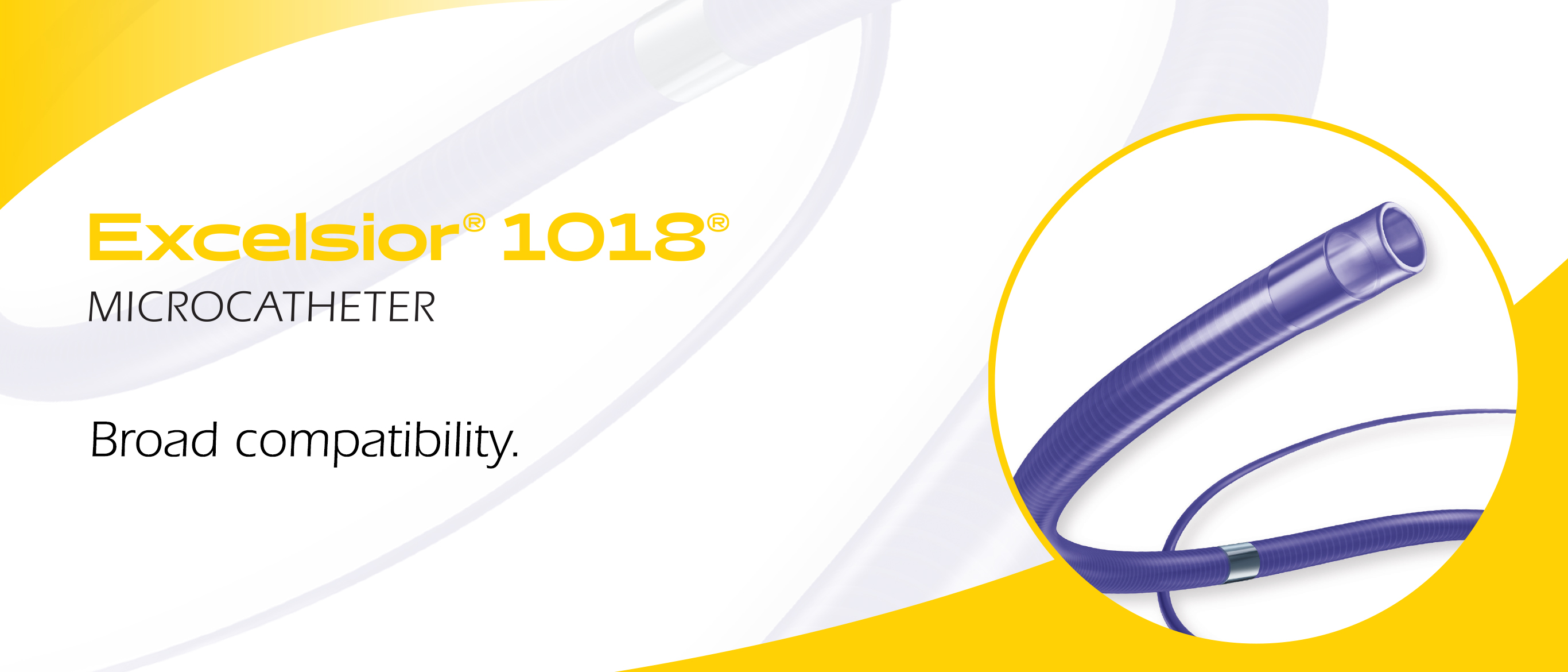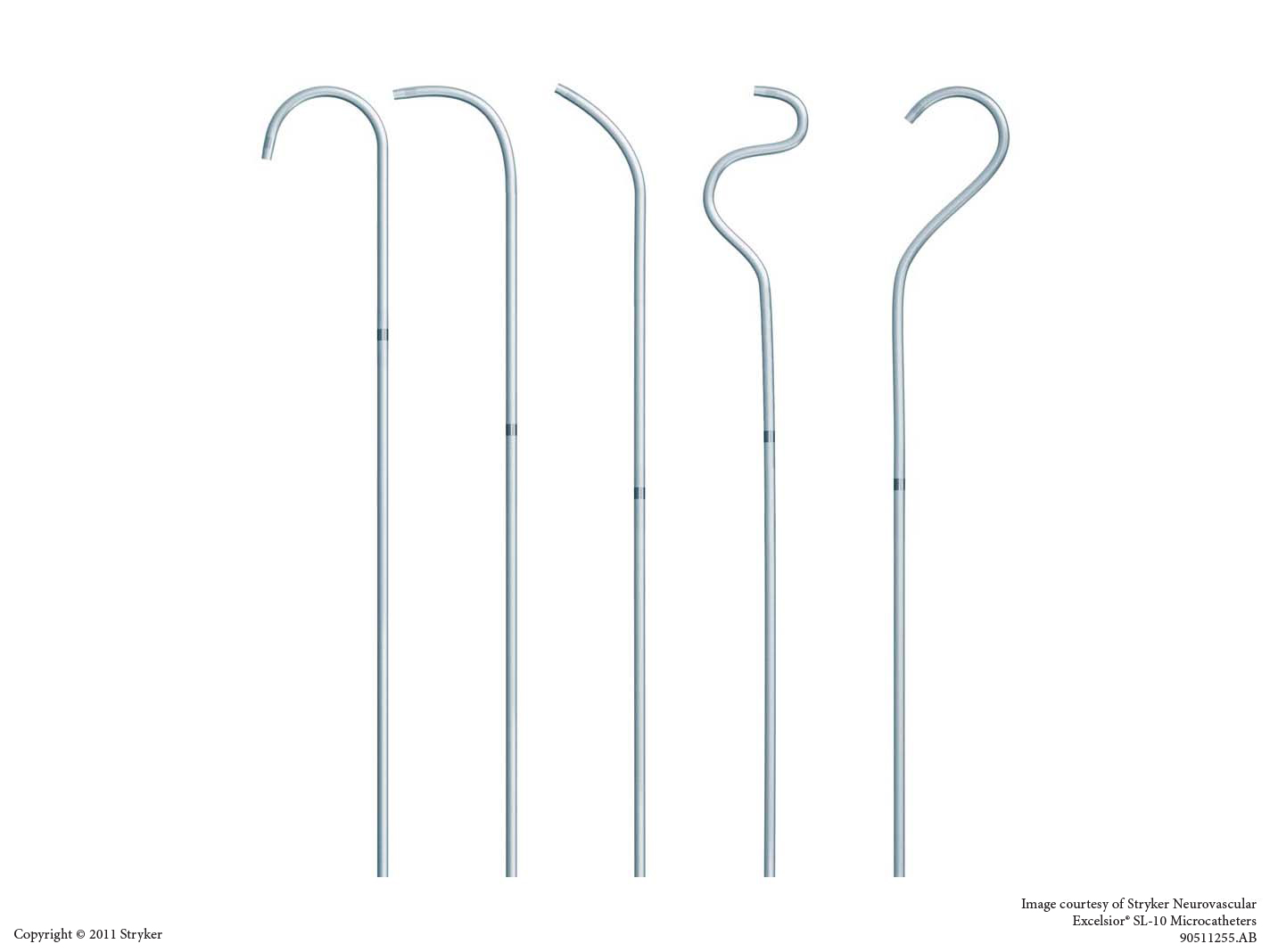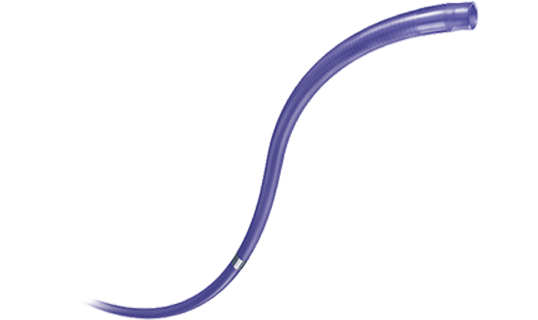INTENDED USE / INDICATIONS FOR USE
Stryker Neurovascular’s Reinforced Microcatheters are intended to assist in the delivery of diagnostic agents, such as contrast media, and therapeutic agents, such as occlusion coils, into the peripheral, coronary, and neurovasculature. CONTRAINDICATIONS None known.
WARNINGS
•Contents supplied STERILE using an ethylene oxide (EO) process. Do not use if sterile barrier is damaged. If damage is found, call your Stryker Neurovascular representative.
•For single use only. Do not reuse, reprocess or resterilize. Reuse, reprocessing or resterilization may compromise the structural integrity of the device and/or lead to device failure which, in turn, may result in patient injury, illness or death. Reuse, reprocessing or resterilization may also create a risk of contamination of the device and/or cause patient infection or cross-infection, including, but not limited to, the transmission of infectious disease(s) from one patient to another. Contamination of the device may lead to injury, illness or death of the patient.
•After use, dispose of product and packaging in accordance with hospital, administrative and/or local government policy.
•These devices are intended for use only by physicians trained in performing endovascular procedures.
•The accessories are not intended for use inside the human body.
•Limited testing has been performed with solutions such as contrast media, saline and suspended embolic particles. The use of these microcatheters for delivery of solutions other than the types that have been tested for compatibility is not recommended. Do not use with glue or glue mixtures.
•Carefully inspect all devices prior to use. Verify shape, size and condition are suitable for the specific procedure.
•Exchange microcatheters frequently during lengthy procedures that require extensive guidewire manipulation or multiple guidewire exchanges.
•Never advance or withdraw an intravascular device against resistance until the cause of the resistance is determined by fluoroscopy. Movement of the microcatheter or guidewire against resistance could dislodge a clot, perforate a vessel wall, or damage microcatheter and guidewire. In severe cases, tip separation of the microcatheter or guidewire may occur.
•Inspect product before use for any bends, kinks or damage. Do not use a microcatheter that has been damaged. Damaged microcatheters may rupture causing vessel trauma or tip detachment during steering maneuvers.
•Shaping mandrel is not intended for use inside the human body.
•Discontinue use of microcatheter for infusion if increased resistance is noted. Resistance indicates possible blockage. Remove and replace blocked microcatheter immediately. DO NOT attempt to clear blockage by overpressurization. Doing so may cause the microcatheter to rupture, resulting in vascular damage or patient injury.
•Do not exceed 2,070 kPa (300 psi) infusion pressure. Excessive pressure could dislodge a clot, causing thromboemboli, or could result in a ruptured microcatheter or severed tip, causing vessel injury. CAUTIONS / PRECAUTIONS
•Federal Law (USA) restricts this device to sale by or on the order of a physician.
•To reduce the probability of coating damage in tortuous vasculature, use a guide catheter with a minimum internal diameter as specified in Table 1 above, and is recommended for use with Stryker Neurovascular hydrophilically coated microcatheters.
•To control the proper introduction, movement, positioning and removal of the microcatheter within the vascular system, users should employ standard clinical angiographic and fluoroscopic practices and techniques throughout the interventional procedure.
•Exercise care in handling of the microcatheter during a procedure to reduce the possibility of accidental breakage, bending or kinking.
•Flush dispenser coil of hydrophilically coated microcatheters prior to removal from dispenser coil. Once the microcatheter has been wetted, do not allow to dry. Do not reinsert the microcatheter into dispenser coil.
•Do not position microcatheter closer than 2.54 cm (1 in) from the steam source. Damage to the microcatheter may result.
•Check that all fittings are secure so that air is not introduced into guide catheter or microcatheter during continuous flush.
•In order to achieve optimal performance of Stryker Neurovascular Microcatheters and to maintain the lubricity of the Hydrolene Coating surface, it is critical that a continuous flow of appropriate flush solution be maintained between the Stryker
•Neurovascular Microcatheter and guide catheter, and the microcatheter and any intraluminal device. In addition, flushing aids in preventing contrast crystal formation and/ or clotting on both the intraluminal device and inside the guide catheter and/or the microcatheter lumen.
•Excessive tightening of a hemostatic valve onto the microcatheter shaft may result in damage to the microcatheter.
•To facilitate microcatheter handling, the proximal portion of the microcatheter does not have the hydrophilic surface. Greater resistance may be encountered when this section of the microcatheter is advanced into the RHV.





